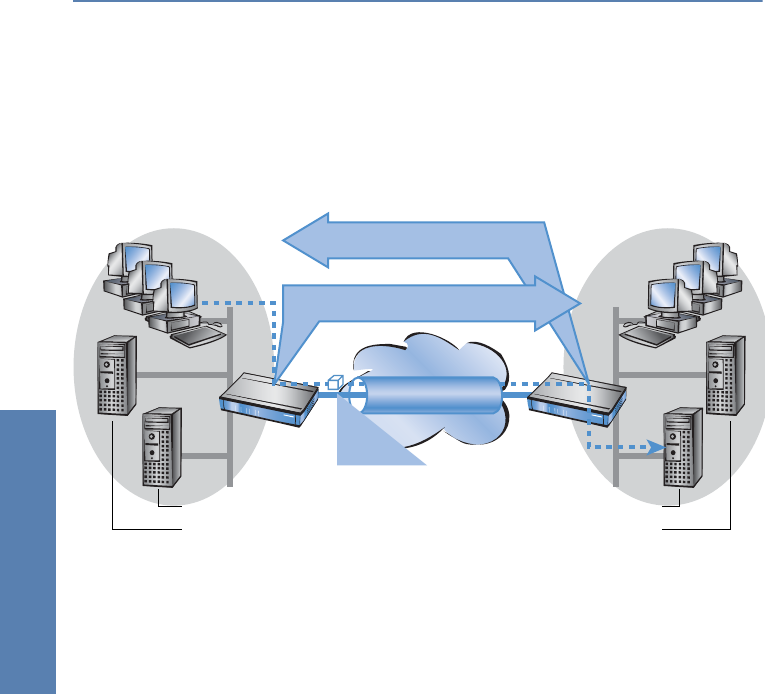
LANCOM Reference Manual LCOS 3.50 ̈ Chapter 7: Routing and WAN connections
82
Routing and WAN
connections
Network coupling
An often appearing scenario is the coupling of two company networks which
internally use the same address range (e. g. 10.0.0.x). This is often the case,
when one company should get access to one (or more) server(s) of the other
one:
In this example network servers of company A and B should have access over
a VPN tunnel to the respective other network. All stations of the LAN should
have access to the server of the remote network. For the time being, there is
no access possible to the other network, because both networks use the same
address range. If one station of the network of company A wants to access
server 1 of company B, the addressee (with an address from the 10.0.0.x net-
work) will be searched within the own local network, and the inquiry even
does not reach the gateway.
With the help of N:N mapping, all addresses of the LAN can be translated to
a new address range for the coupling with the other network. The network of
company A e. g. will be translated to 192.168.1.x, the network of company B
to 192.168.2.x. Under these new addresses the two LANs are now reachable
for the respective other network. The station from the network of company A
is now addressing server 1 of company B under the address 192.168.2.1. The
addressee does not reside any more within the own network, the inquiry is
now passed on to the gateway, and the routing to the other network is work-
ing as desired.
N:N mapping to 192.168.1.x
N:N mapping to 192.168.2.x
Gateway
Gateway
Server_A1: 10.0.0.1
Server_A2: 10.0.0.2
Server_B1: 10.0.0.1
Server_B2: 10.0.0.2
VPN tunnel
Target: 192.168.2.1
Network of firm A:
10.0.0.x
Network of firm B:
10.0.0.x


















